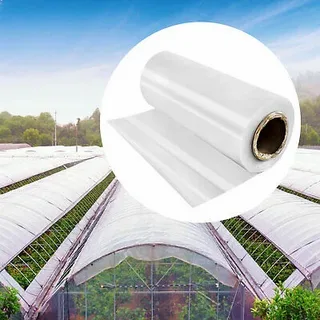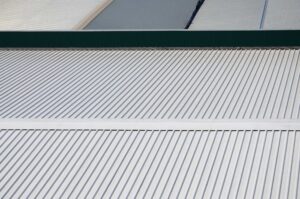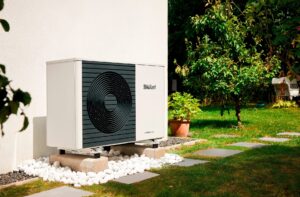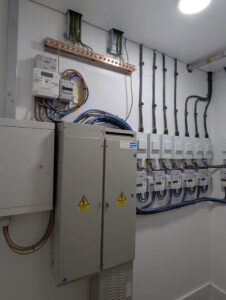
Greenhouse plastic rolls
Choosing the right greenhouse plastic rolls isn’t just about grabbing the first one you see online or at a local supplier. Whether you’re setting up a backyard greenhouse or managing a larger commercial operation, the quality of your plastic covering can make or break your growing season.
There are quite a few factors that go into making a smart purchase. So, if you’re in the market for greenhouse plastic and want to make sure your investment pays off, here’s what you need to know—straight from growers and experts who’ve been there.
Know Your Growing Needs First
Before even looking at product specs, think about what you’re growing and how long you plan to use the structure.
-
Are you growing year-round or seasonally?
-
Do you need light diffusion for delicate plants?
-
Will your greenhouse face intense weather, like strong wind or heavy snow?
Different crops and climates call for different types of greenhouse plastic rolls. For example, tomatoes benefit from diffused light, while succulents prefer more direct sun.
Understanding your needs upfront helps narrow your options and prevents costly mistakes down the line.
Check the Thickness (Mil) Rating
Thickness is usually measured in mils—one mil equals one-thousandth of an inch. Most greenhouse plastic rolls come in 4 mil, 6 mil, or 8 mil options, with 6 mil being the most common.
-
4 mil: Best for short-term projects or one-season use. Affordable but less durable.
-
6 mil: Ideal for most growers—good balance of strength, flexibility, and light transmission.
-
8 mil: Heavy-duty. Great for long-term or high-wind areas, though more expensive and less light-transmitting.
Keep in mind that thicker doesn’t always mean better—it depends on your growing goals.
UV Protection Matters (A Lot)
One of the most overlooked features in greenhouse plastic rolls is UV stabilization. Without it, the plastic will become brittle and start breaking down after just one season, especially under constant sunlight exposure.
Look for rolls that are labeled “UV-stabilized” or “UV-treated.” Most high-quality greenhouse films offer around 4 years of protection against UV rays. It may cost a bit more upfront, but it’ll save you time and replacement costs later.
Light Transmission and Diffusion
Plants need light to thrive, but not all light is created equal. Standard clear films offer high light transmission—up to 90%—but they can also create hot spots that stress plants.
Some of the best greenhouse plastic rolls now come with built-in light diffusion technology. This spreads sunlight more evenly throughout the greenhouse, preventing direct scorching and encouraging even growth.
Look for descriptions like:
-
High light diffusion
-
Anti-drip and anti-condensation
-
Photoselective or UV-open
If you’re serious about plant health and yield, this is a key feature to consider.
Longevity and Warranty
Not all greenhouse plastics are created equal. One big sign of quality is the manufacturer’s confidence in their product—usually expressed in the form of a warranty.
A 4-year warranty is standard for commercial-grade greenhouse plastic rolls. If a product only guarantees one or two seasons, it might be better suited for temporary setups or low-stakes projects.
When reading reviews or comparing options, check how the material performs over time. Customer feedback is a goldmine for real-world durability.
Reinforcement and Tear Resistance
Especially in windy or storm-prone areas, you’ll want plastic that doesn’t tear easily. Some greenhouse plastic rolls are reinforced with mesh or extra polymer layers to improve strength without sacrificing light quality.
You don’t always need reinforced plastic, but for large spans or areas with unpredictable weather, it’s often worth the upgrade.
Pro tip: Tear resistance isn’t just about weather—it also makes installation easier. You’re less likely to rip or damage the plastic when pulling it into place.
Width and Length Sizing Options
It seems obvious, but it’s surprising how often people order the wrong size. Greenhouse plastic is usually sold in rolls that range in width from 10 feet to 50 feet and in lengths from 25 to 200 feet or more.
Before ordering:
-
Measure your greenhouse twice
-
Add a few extra feet for overlap, trimming, or repairs
-
Don’t forget about doors, vents, or gable ends
Getting the right size the first time saves you from headaches during installation. And some sellers offer custom cuts always a plus if you have a unique structure.
Temperature and Climate Compatibility
If you’re growing in an area with extreme temperatures, check for thermal properties in the plastic. Certain greenhouse plastic rolls come with additives that help retain heat in cold months and reflect some infrared rays during the heat of summer.
For cold regions, you may want to consider double-layer setups with an air gap between two plastic layers for insulation. This is especially useful for crops that need a stable climate year-round.
Price vs. Value
There’s a huge price range when it comes to greenhouse plastic rolls. Some rolls may be twice the price of others, but that doesn’t necessarily mean they’re overpriced—it might reflect better materials, UV resistant plastic sheeting, or extra features.
Instead of just going for the cheapest option, think in terms of cost per season. A roll that lasts 4+ years and keeps your crops healthy is ultimately more economical than a flimsy one that needs replacing every spring.
Where You Buy It Matters
Not all suppliers are equal. Stick with reputable agricultural supply stores or well-reviewed online retailers who specialize in greenhouse materials. These sellers usually provide better product descriptions, customer support, and return policies.
Avoid generic or unlabeled plastic sold at hardware stores unless you know exactly what you’re getting. Generic construction plastic may be cheaper, but it often lacks UV treatment and won’t last under greenhouse conditions.
Final Thoughts
Investing in the right greenhouse plastic rolls is more than just a shopping decision—it’s a commitment to the success of your plants, your harvest, and your time. When chosen carefully, good plastic film will create a stable, efficient growing environment and protect your investment for years.
So don’t rush it. Compare products, read reviews, and ask suppliers questions. A little upfront research will pay off big time down the road.
Need help picking the right roll? Talk to your local greenhouse supplier or extension service. They’ve seen what works best in your climate and can offer personalized advice.
And remember—great plastic doesn’t grow your plants for you, but it sure makes the job a whole lot easier.






1 thought on “What to Look for When Buying Greenhouse Plastic Rolls”